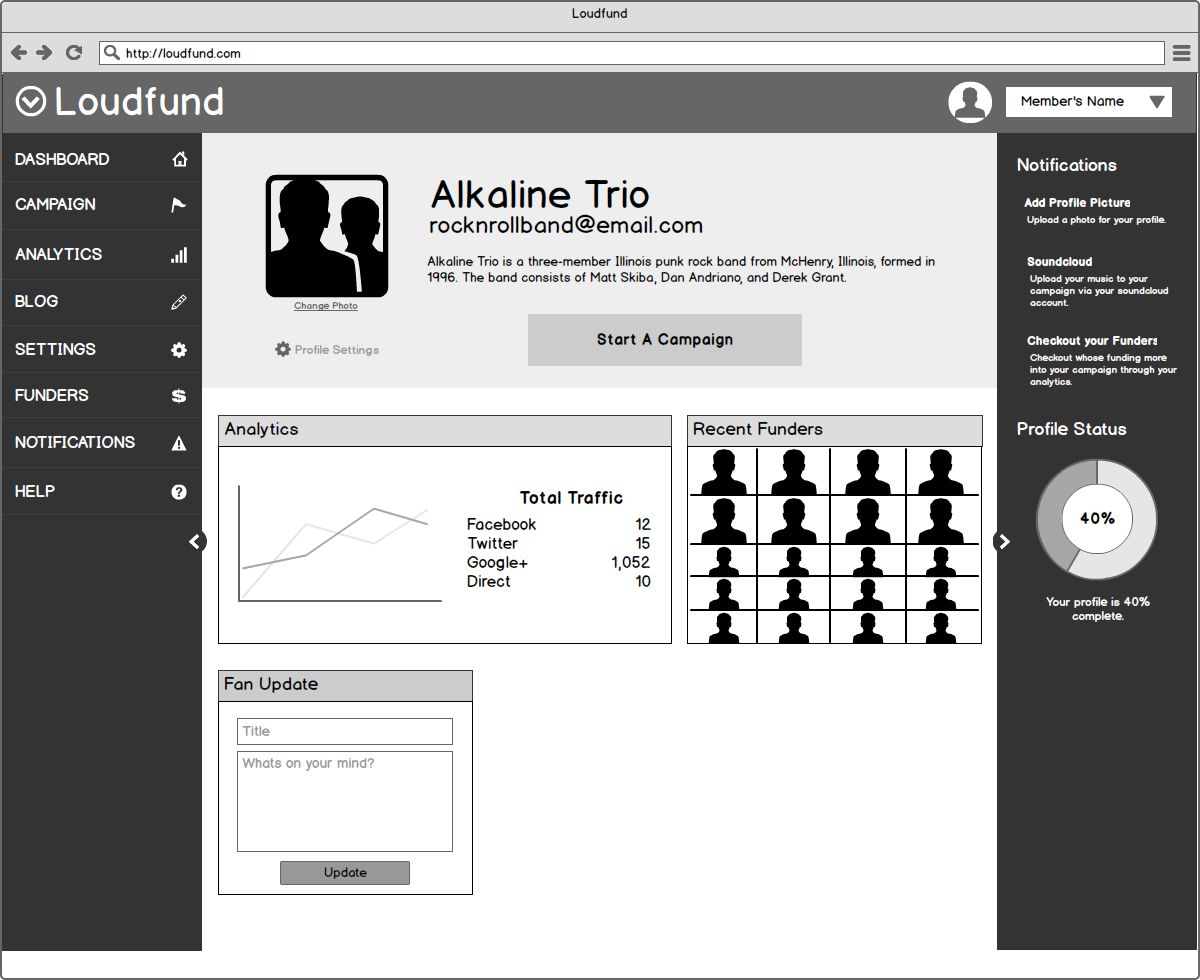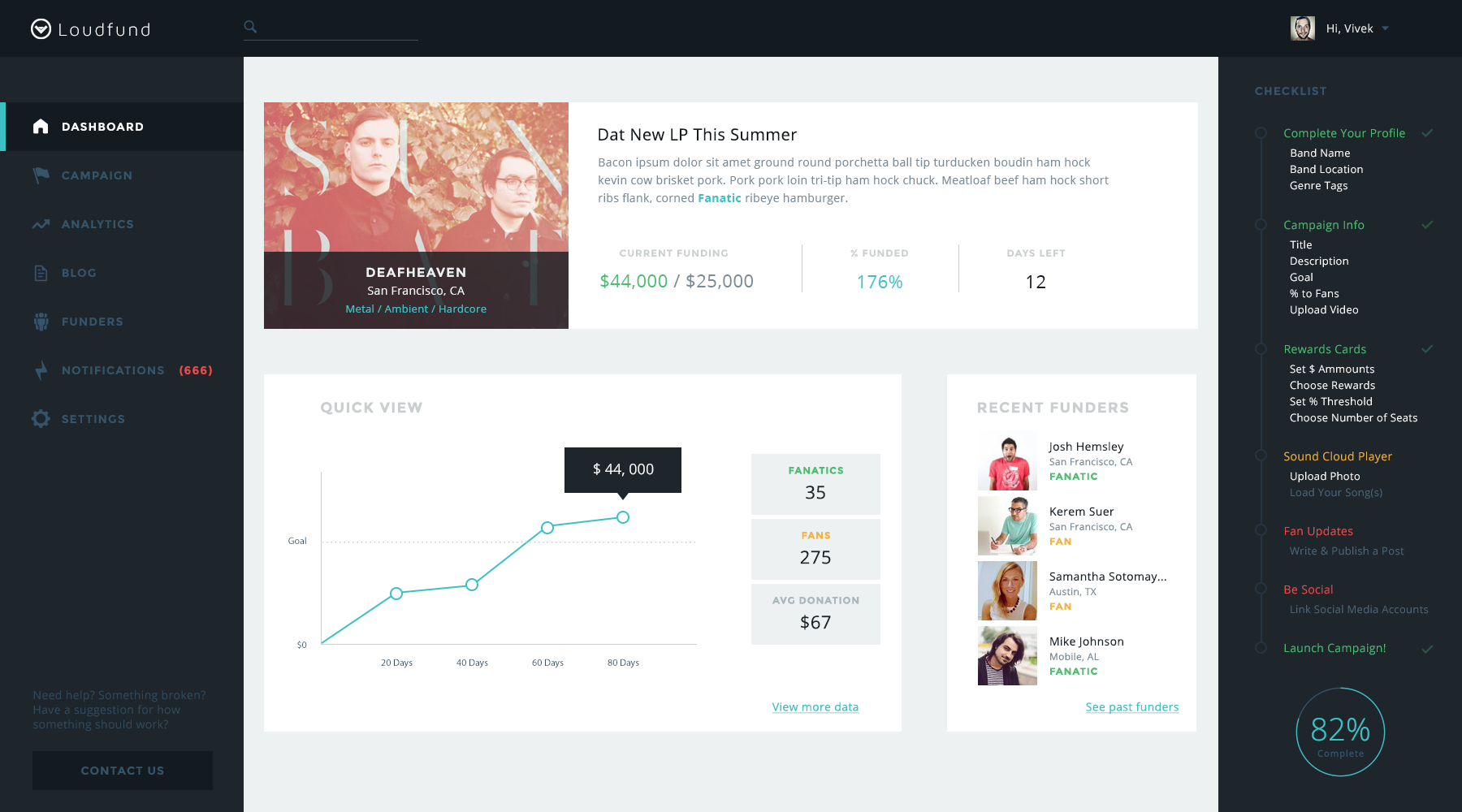Loudfund Artist Dashboard [UX, UI, PM]
As a founding member of Loudfund, I lead the product and design from concept to release.
Loudfund: An Equity-based Crowdfunding Platform
Project:
Overview: Artist Campaign Creation, Campaign Page, Dashboard
Role:
Principle Designer Hybrid Product Manager
Date:
Feb 2013 - Dec 2016
Website:
Description:
Artists joined Loudfund to raise money to facilitate and fund various aspects of their careers as an alternative to a standard record deal. The “Artist Dashboard” was the hub for onboarding, setting up, and tracking their funding campaigns.
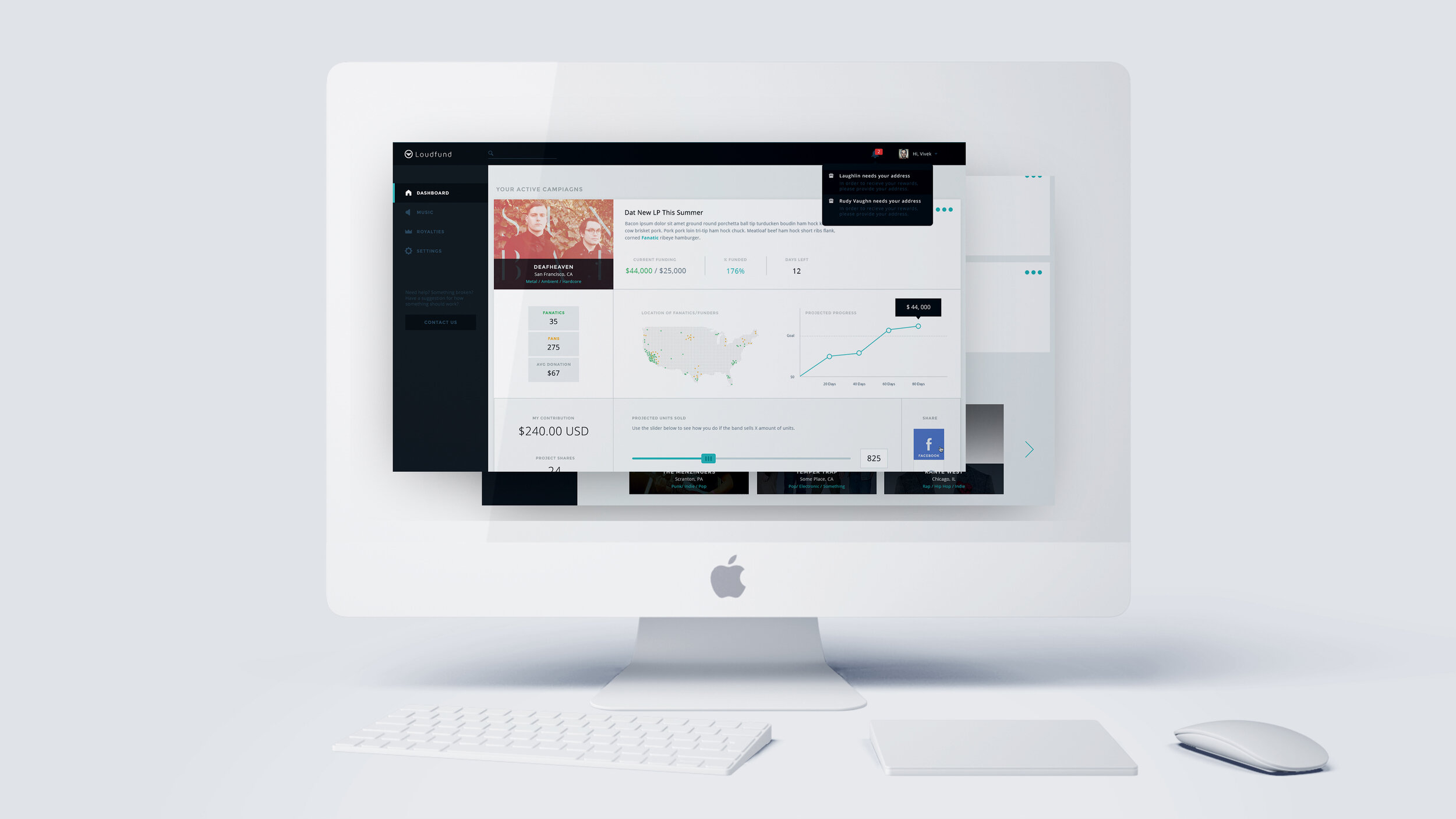
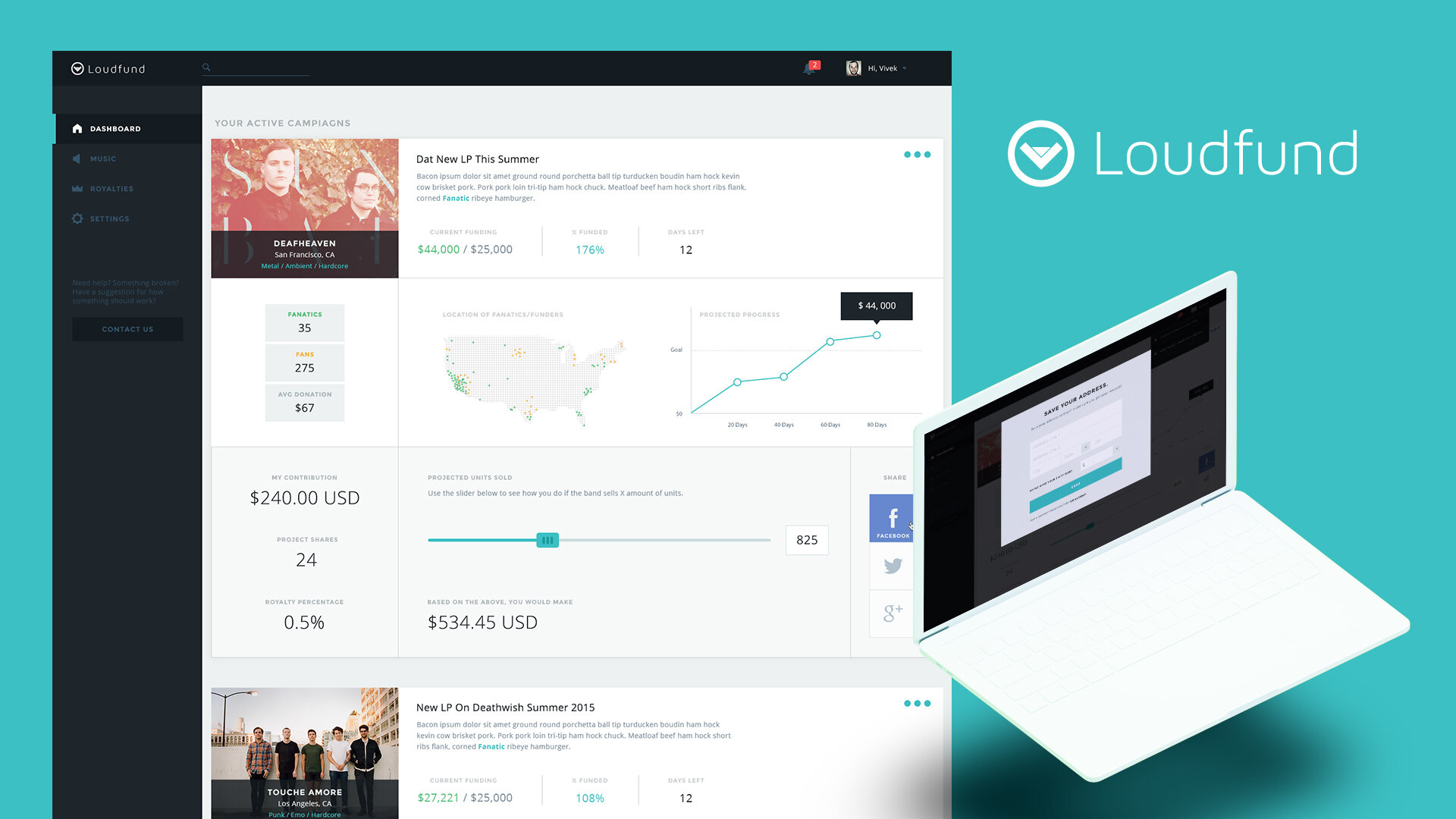
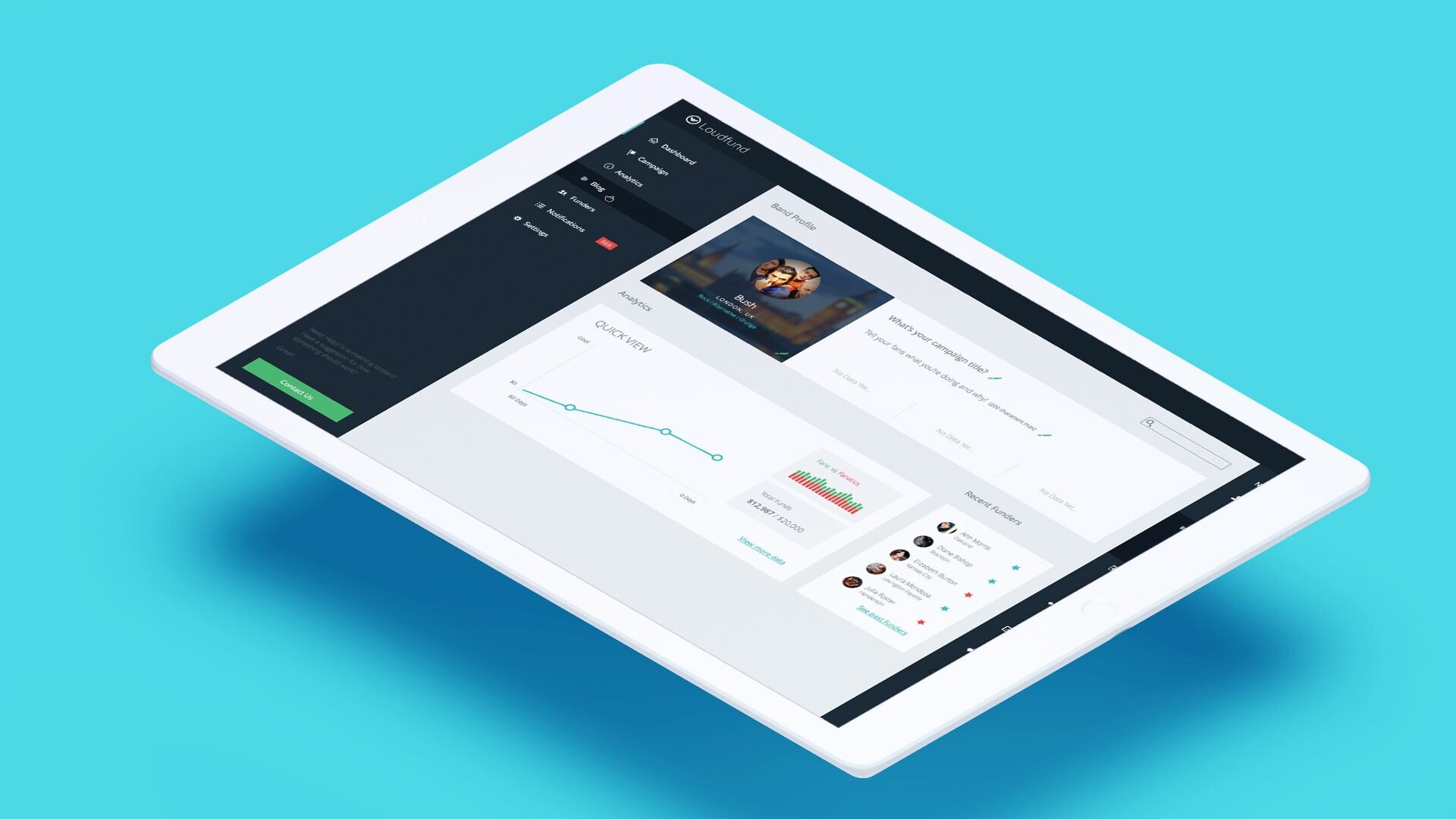
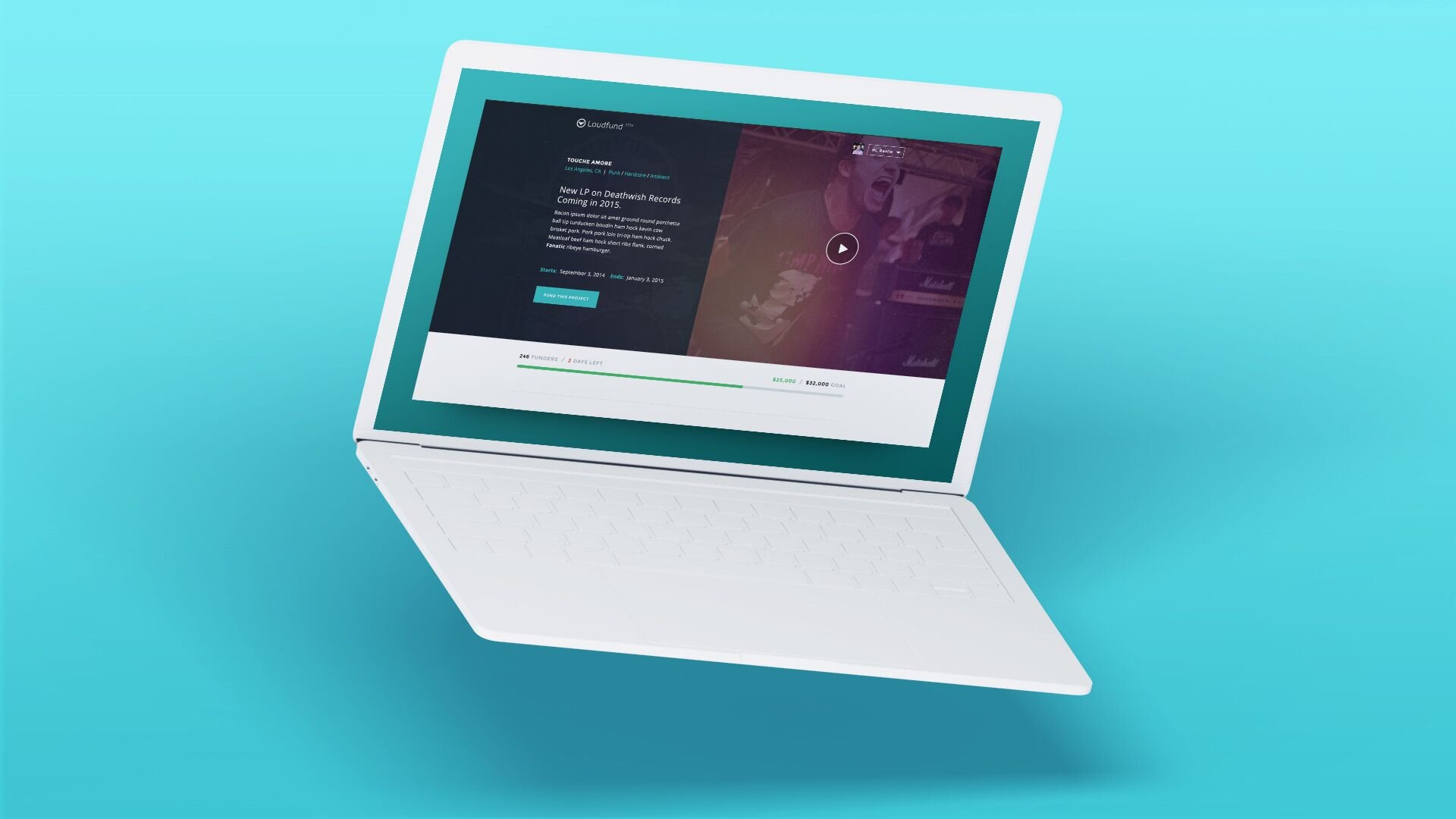
Introduction
Project Overview
Loudfund aimed to become the world’s first equity-based crowdfunding platform to revolutionize the record deal. Loudfund wanted to democratize the music industry: giving power to first the Artists, and secondly to the fans. Facilitating the terms of a record deal, bands were able to join the platform, set up their projects, and kick-off campaigns, which ranged from album pre-orders all the way to full-on marketing and tour campaigns.
Problem Statement
As it stands, independent artists do not have access to monies necessary to compete with artists and bands backed by record labels, regardless of talent, exposure, or anything in between. Record labels hold all of the cards, so to speak, as they have access to large quantities of funds. Typically these funds are given to bands on a contract loan with expectations that the loan is paid back to the label before the band receives royalties and checks, and that is only if the band’s contract accounts for those royalties. For every $0.99 iTunes earns a band, upwards of $0.63 goes to iTunes, marketers, managers, promoters, publishers, licensers, and record labels - leaving only a fraction of the sale to an artist or band. The music industry is actually anti-artist unless you are at the level of Jay Z, Maroon 5, or Kelly Clarkson. Even then, the top artists still find ways to license and publish their own music once they become savvy to the industry. This makes it almost impossible for independent artists (who are arguably better than mainstream artists in many cases) to earn a living while making their art. Loudfund set out to change this model and flip it upside down.
The standard 50/50 Record Deal:
Old Record Label Model - Leaving the Artist with no money and no control
The Loudfund 360 Record Deal:
Loudfund Record Deal Model - Artist control the revenue and choose the percentage they share with their funder “Fans”
My Role in the Project
As a founding member of Loudfund, I lead the product and design from concept to its beta round - raising more than $190,000 over 60 days for 10 independent Atlanta artists helping fund marketing, studio time, production, and regional tours.
“I lead the product and design from concept to its beta round - raising more than $190,000 over 60 days for 10 independent Atlanta artists.”
I contracted and mentored junior and mid-level UI/UX designers, front end developers, and lead senior backend developers to achieve goals that served our beta-artists as well as our angel investors. I did the initial UX work, directed UI and prototyping, and contributed to the front end build while informing backend strategies. For three years, I work on every aspect of the business in the context of design. It was an absolute blast, even if it shaved a decade of my life. The building, running, and the sunsetting of my own startup was the single most educational experience of my career.
Loudfund Business Plan Infographic: How this shit should work:
I used Aha.io software to plan and track the product roadmap. I also used it to generate progress reports for the team and investors. The tool integrated with Jira and it was my first time I was responsible for everything from user stories, acceptance criteria, UX design, UI design, leading development and everything in between (I didn’t sleep for maybe 1 year but Redbull is a helluva drug).
Once we had a business plan, revenue model, as well as our stories & personas defined, it was time to plan the site map and general information architecture. I love looking at our v1 and our early assumptions and how quickly we had to expand the model to cover the reality of the software after we sat down with our development team.
Early UX flow for Artist Campaign Creation, used for testing & validation:
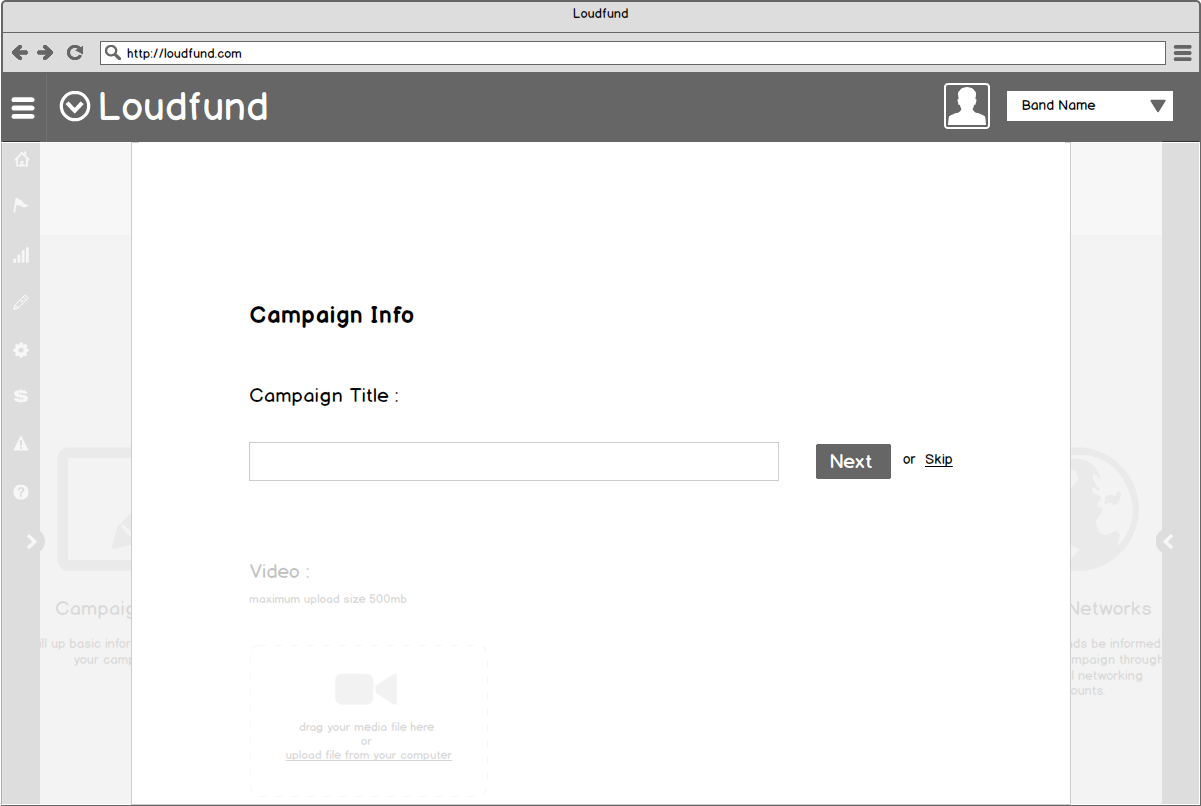

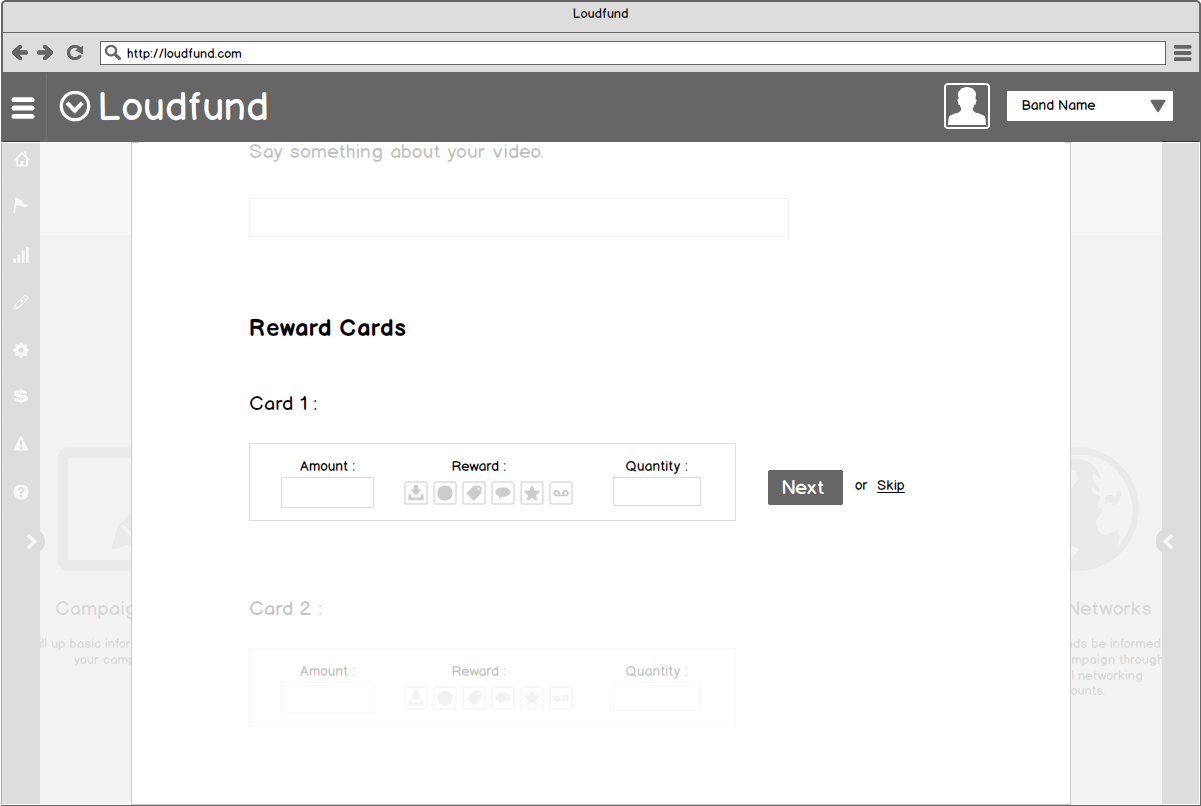
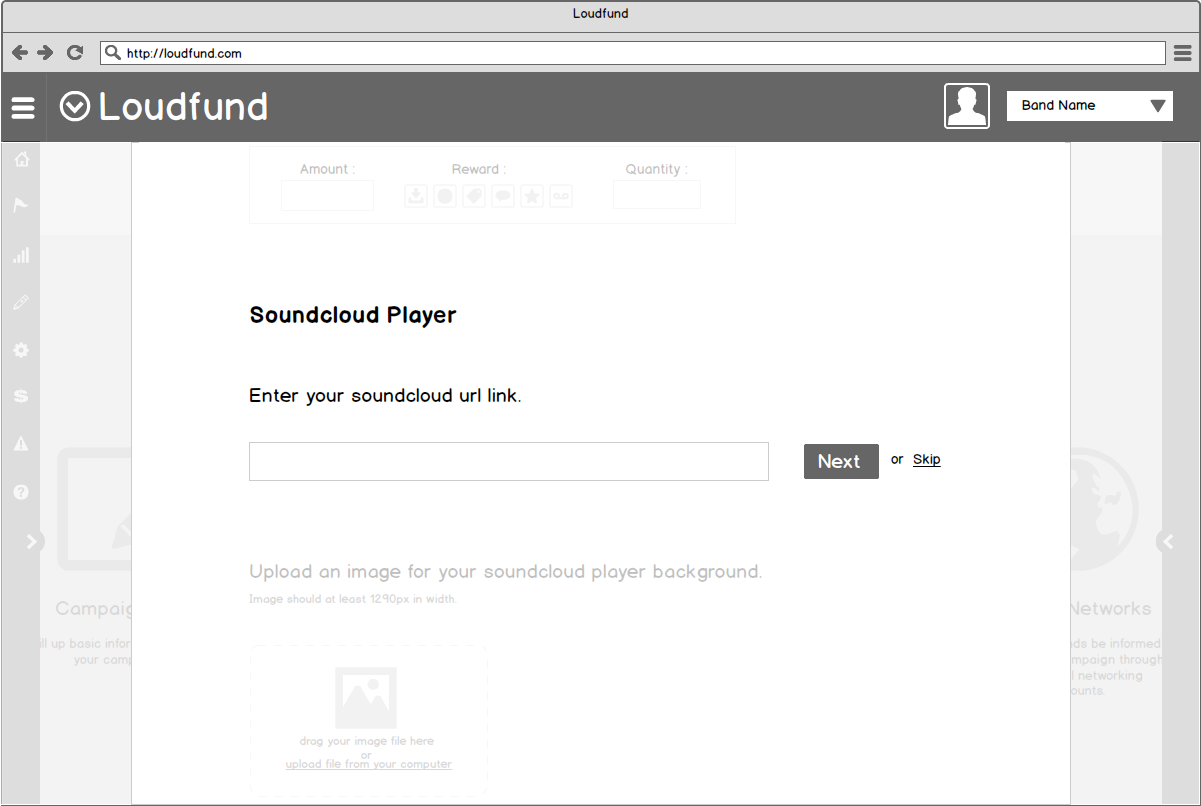
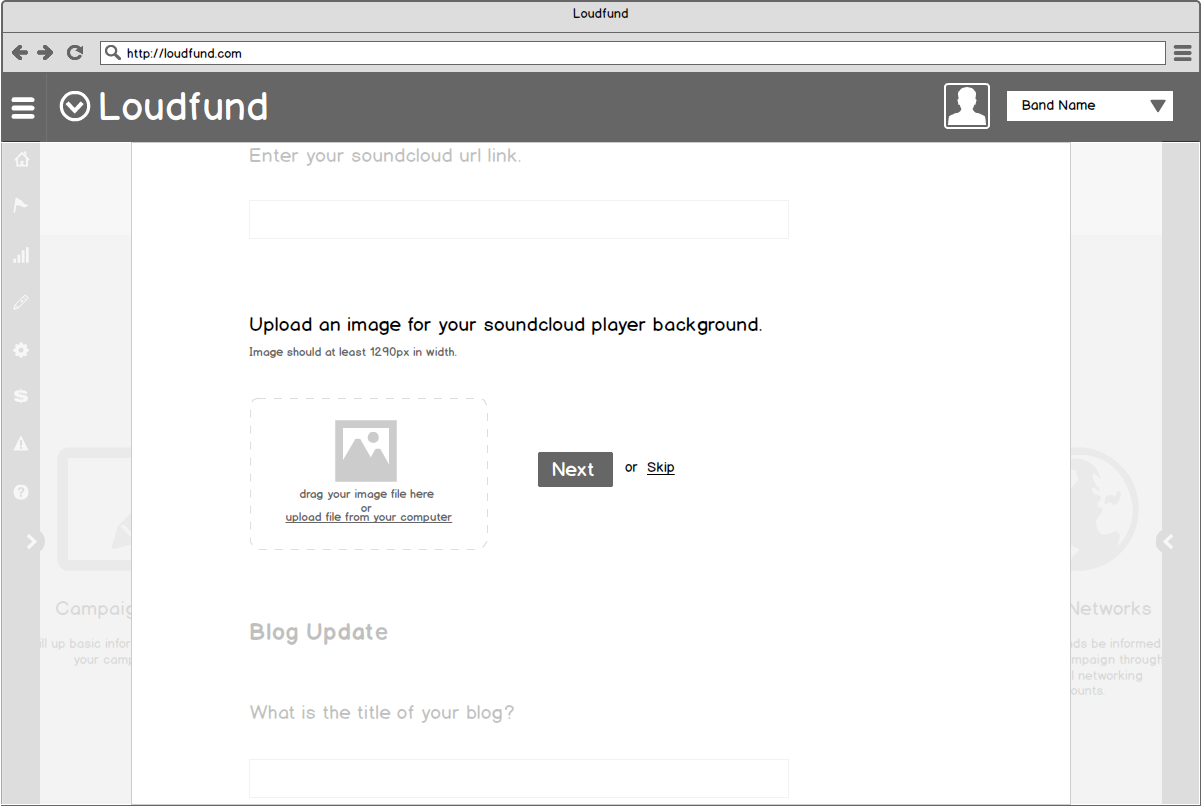
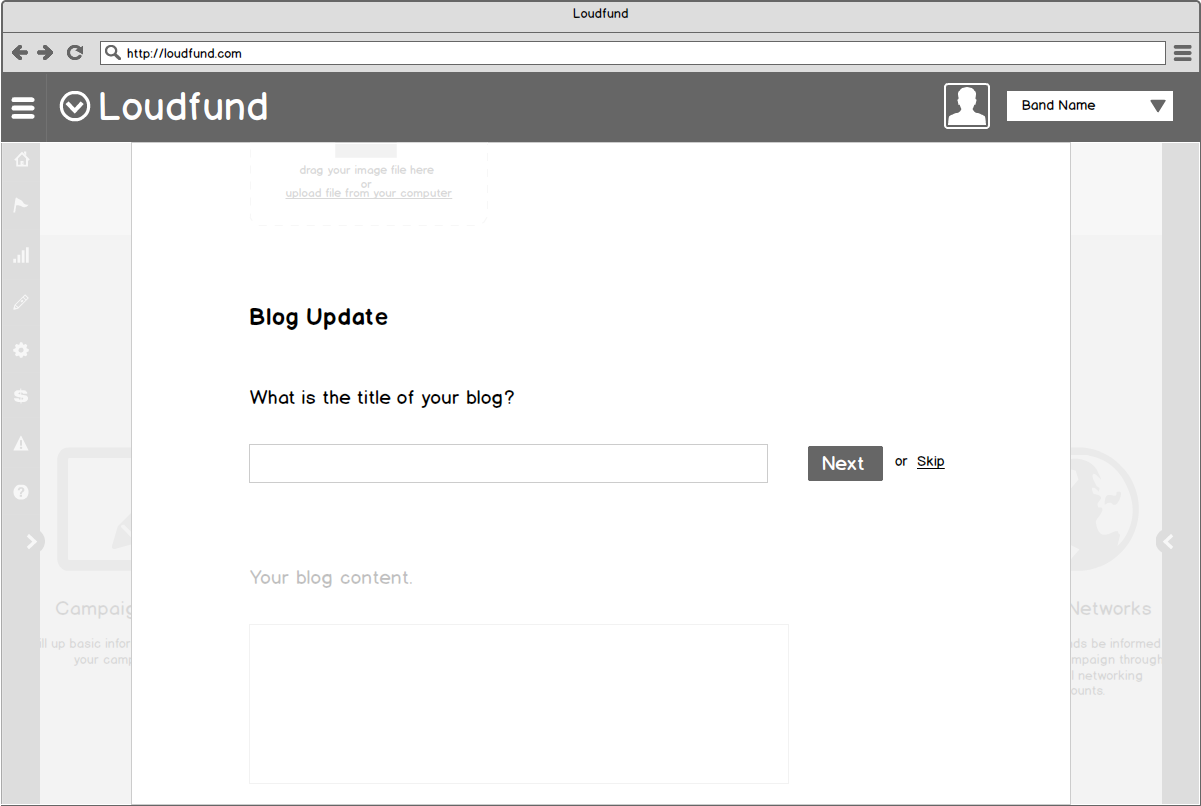
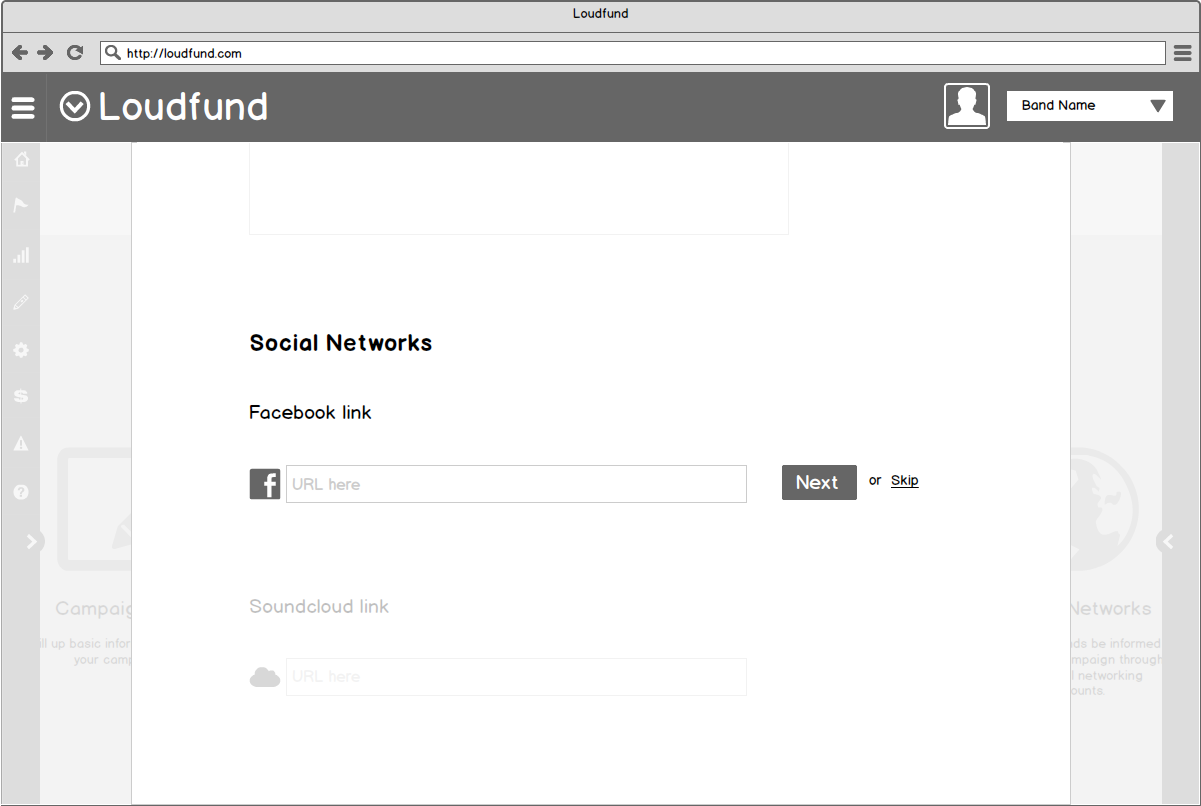
Final UI for the MVP Campaign Creation:
After a Band or Artist finished onboarding, the end result was a Campaign Page, ready for fans to learn about the project, get a feel for the band’s personality, listen to 1+ songs, read any updates, and link out to social media.
Wireframe & 1st Concept of a campaign page:
Final UI Mockups - This design went to production:
Process
Understanding the User and/or Problem
Very early in the process, I identified the need to segment our users for obvious reasons. Fans would interact with the platform in a very different way than bands would. In the great debate of the “chicken” or the “egg,” we decided to move first on a platform that was attractive and engaging to the bands and artists. The hypothesis was that if we attracted the right groups and artists, their fan bases would come with them. This seemed to be the path of least resistance when considering the alternative of attracting heaps of users with unrecognized bands - there was no guarantee those artists and bands would be able to command a single penny, let alone enough funds to jumpstart projects, albums, or tours. After we decided to attract bands first, I got to work on identifying the key aspects that would get bands exciting, trusting of, and using the Loudfund platform. Those aspects included an easy and dead-simple way to establish a project, a 1-click solution to attract fans via social media, and a dashboard to view campaign progress and funding levels.
“What” I did & “Why”
Before we knew what a Google Design Sprint was, we just went crazy and tried to build dashboards and generate campaign pages as fast as possible! In less than 6 months, we had built and tested 4 versions of a platform. The first looked a lot like Kickstarter, which we were happy to rip off. However, we found insight that proved the Kickstarter UX model was broken as difficult to quickly parse. The behavior we had to break away from was “what do I physically get for my money” and push perception towards the emotional value of contributing to your favorite independent artist to enable real art in a world where MTV ultimately failed.
Site Map v1.0:
Site Map v1.4:
This was the sitemap and general information architecture which mapped to Aha.io roadmap efforts as well as Jira tickets by code.
Before & After - Wireframe to MVP UI Mockup:
100%
of Loudfund Beta Artists Funded
60 Days
Average Artist Campaign Length
$190k
Raised on Our Platform
We built onboarding, dash-boarding, and socializing tools into every aspect of the artist’s experience and aimed to give them a home for building and tracking their record deals with their fans.
Auto generated social media assets for bands to help promote their campaign page.
It was a pleasure to think through every aspect of attracting, onboarding, and providing a record label experience for independent artist. This is an example of just one piece of collateral we designed to make the experience feel premium and special.
Result
Outcomes & Learnings
Bands and artists loved the dashboard, and it successfully helped them run, end, and follow through on their campaigns. However, the real magic and the successfulness of the campaigns actually had little to do with the platform. It was the bands who had built and fostered relationships with their fans, that had brought their strong work ethic that ultimately helped them win. This was a small hit to our ego, but in the end, we were happy to see artists who cared, connecting with their fans, and making art that people cared about. We ended up being a necessary bridge between the two groups, which I think became far more valuable to watch.
What Happened Next
Loudfund ultimately had to pivot after the Security and Exchange Commission voted laws and investing regulations into place, which would have bankrupted us via K1 investment filing fees. It was gut-wrenching to watch our model be validated only to realize this was not a viable revenue model after costs were factored. The pivot was less appealing, and we did not find a market fit before our seed fund running out. ¯\_(ツ)_/¯ still worth it. And I grew so much. Not only in my design skills but also in my soft skills. You can’t be a “rockstar”, “ninja”, “guru”, or a “unicorn” and achieve this much in such a short time. You ride or you die with your team.














